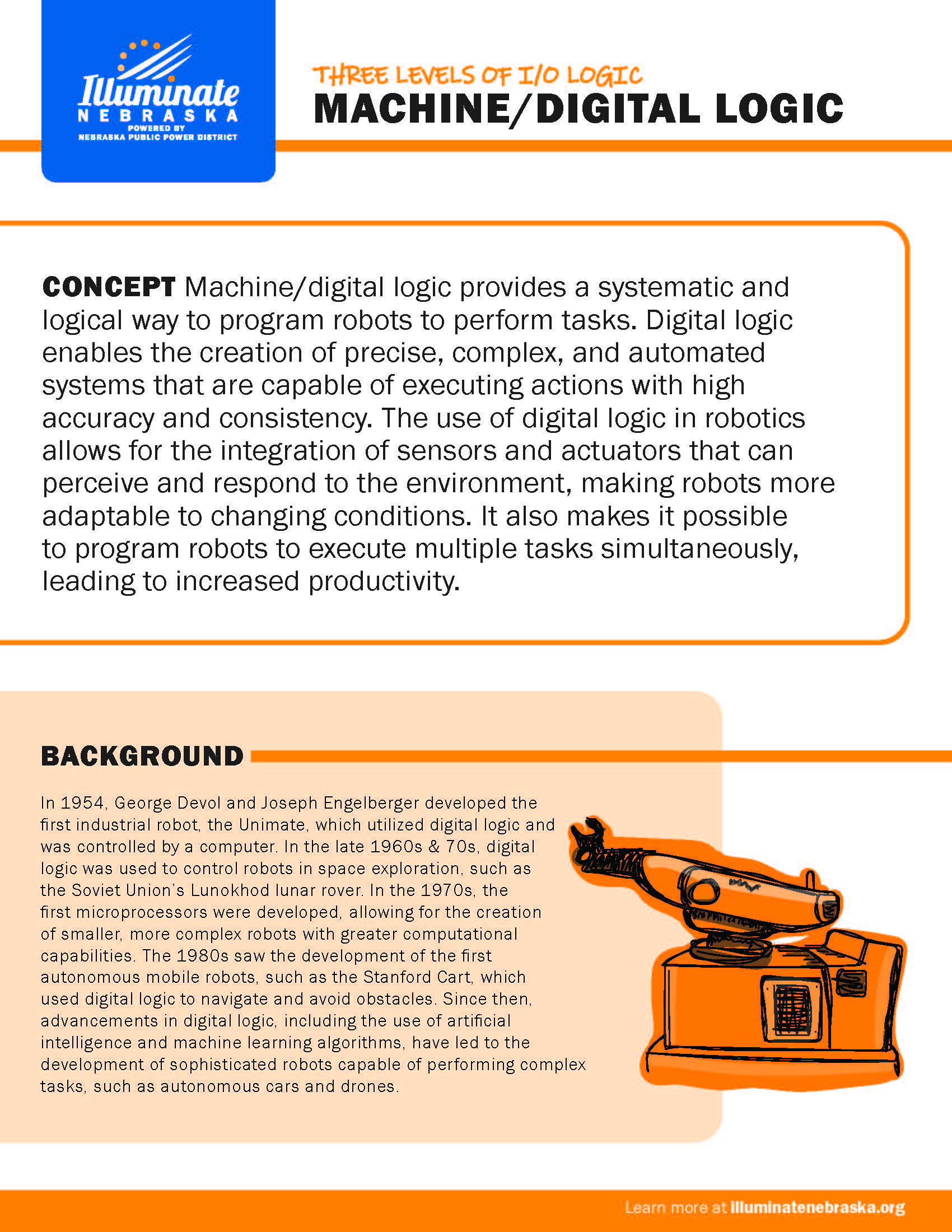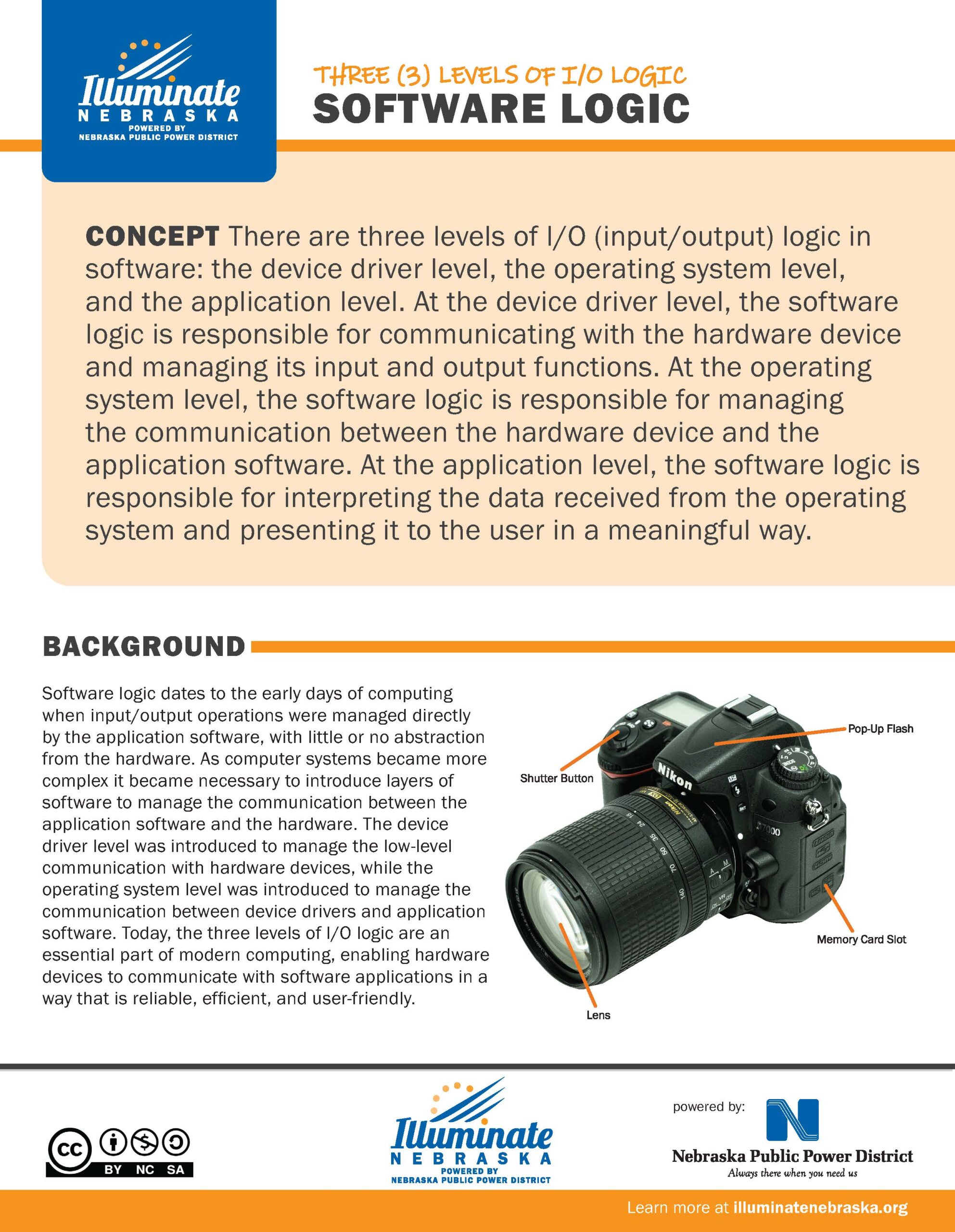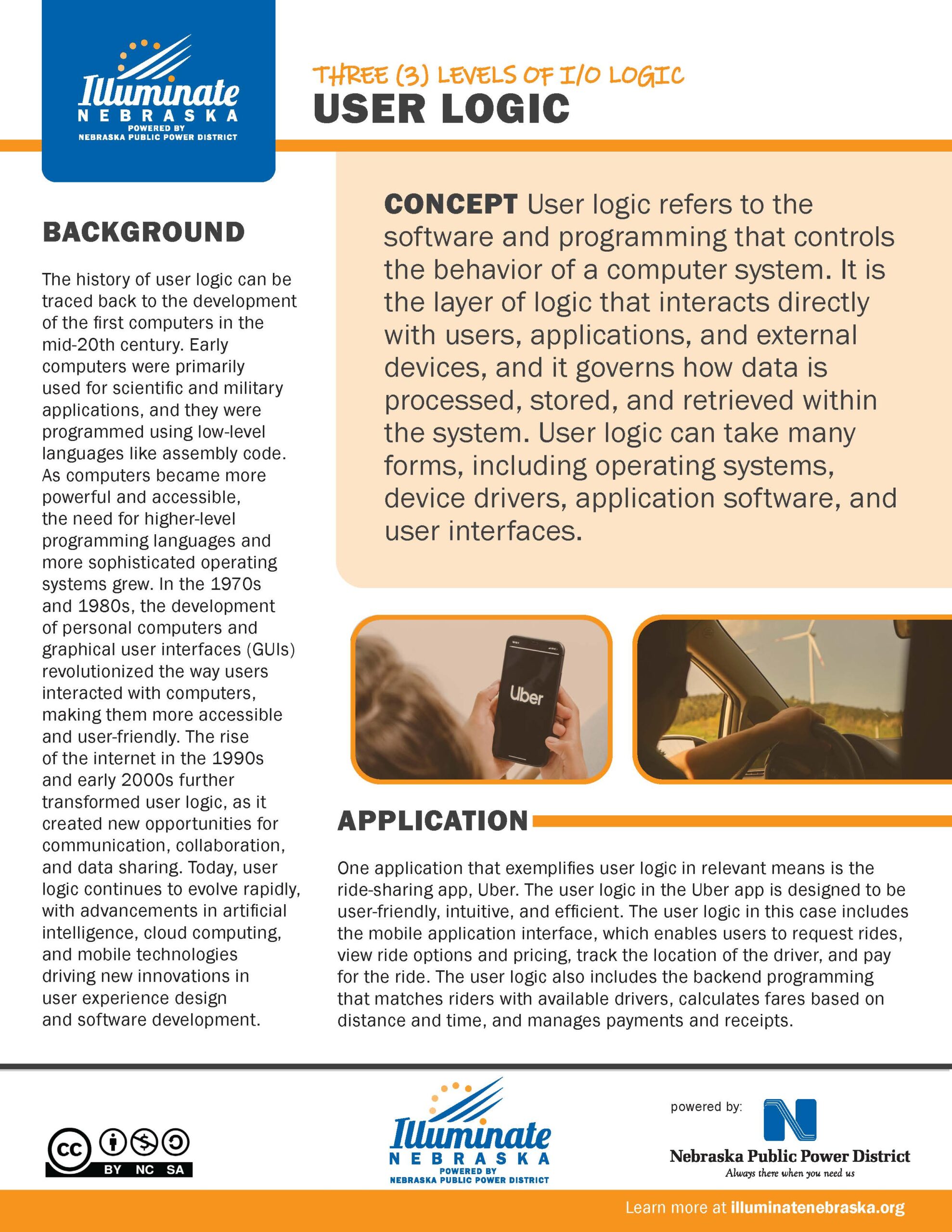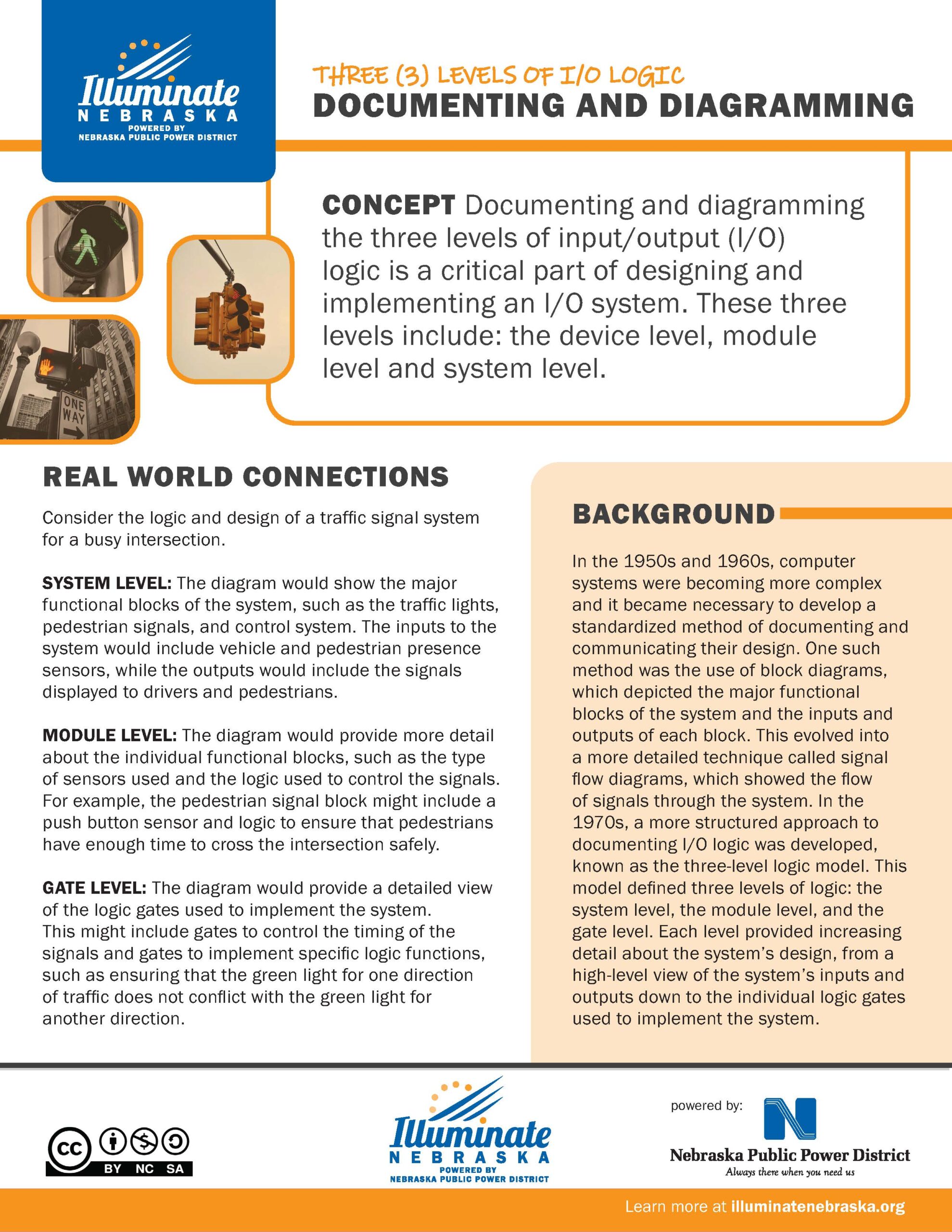Machine | Digital Logic
Machine/digital logic provides a systematic and logical way to program robots to perform tasks. Digital logic enables the creation of precise, complex, and automated systems that are capable of executing actions with high accuracy and consistency.
Software Logic
There are three levels of I/O (input/output) logic in software: the device driver level, the operating system level, and the application level. At the device driver level, the software logic is responsible for communicating with the hardware device and managing its input and output functions.
User Logic
User logic refers to the software and programming that controls the behavior of a computer system. It is the layer of logic that interacts directly with users, applications, and external devices, and it governs how data is processed, stored, and retrieved within the system. User logic can take many forms, including operating systems, device drivers, application software, and user interfaces.
Analog vs. Digital Fundamentals
Analog and digital are two fundamental concepts in electronics and signal processing. Analog signals are continuous and are often represented by waves, such as sound waves or voltage waves, and can be measured as a continuous voltage or current.
Documenting & Diagramming
Documenting and diagramming the three levels of input/output (I/O) logic is a critical part of designing and implementing an I/O system. These three levels include: the device level, module level and system level.





